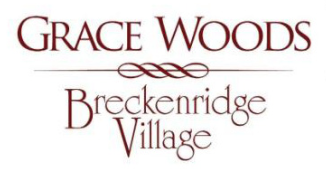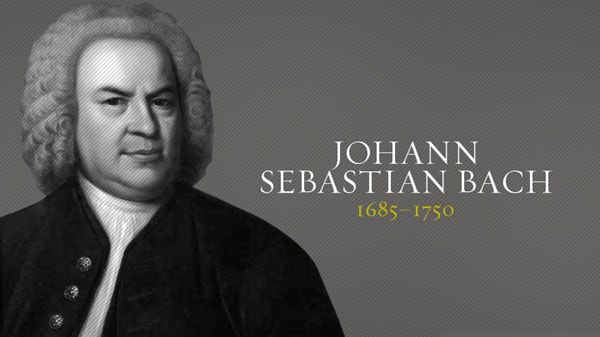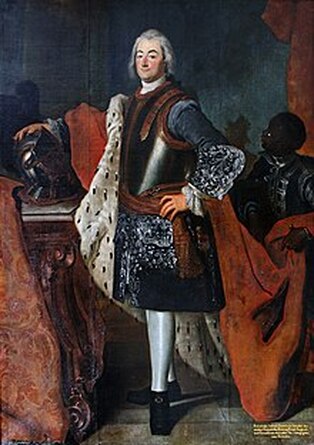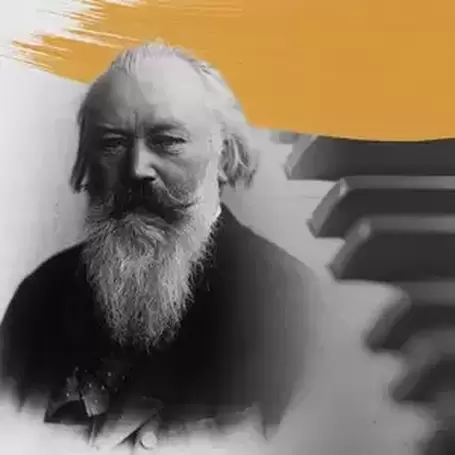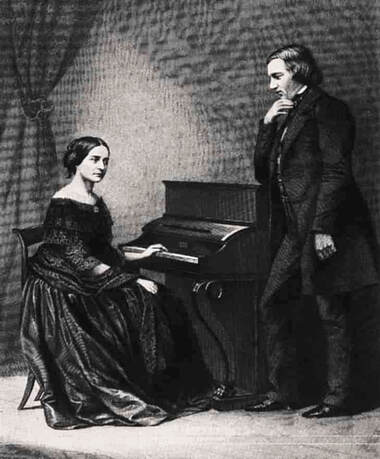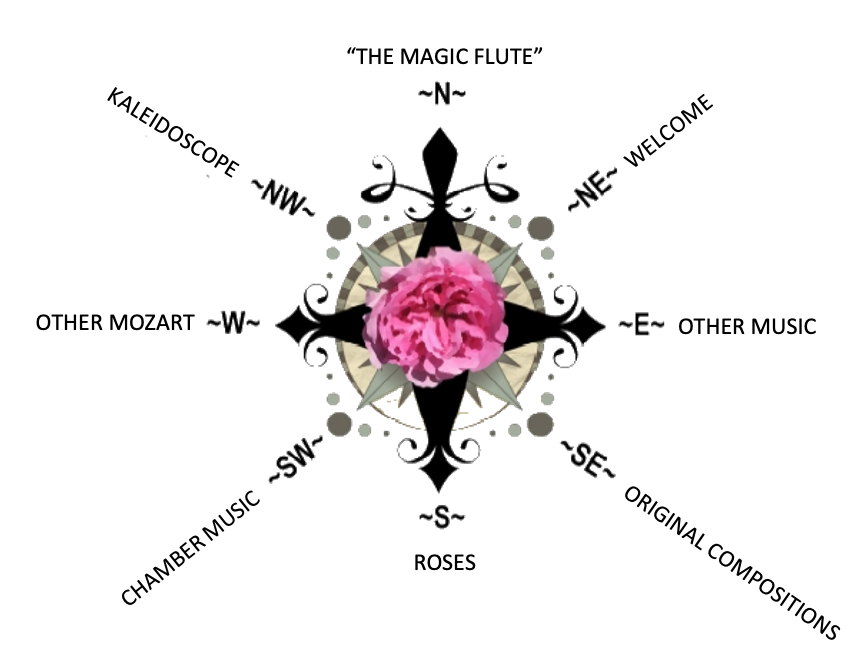- Home
- N - The Magic Flute
- NE - Welcome!
-
E - Other Music
- E - Music Genres >
- E - Composers >
-
E - Extended Discussions
>
- Allegri: Miserere
- Bach: Cantata 4
- Bach: Cantata 8
- Bach: Chaconne in D minor
- Bach: Concerto for Violin and Oboe
- Bach: Motet 6
- Bach: Passion According to St. John
- Bach: Prelude and Fugue in B-minor
- Bartok: String Quartets
- Brahms: A German Requiem
- David: The Desert
- Durufle: Requiem
- Faure: Cantique de Jean Racine
- Faure: Requiem
- Handel: Christmas Portion of Messiah
- Haydn: Farewell Symphony
- Liszt: Évocation à la Chapelle Sistine"
- Poulenc: Gloria
- Poulenc: Quatre Motets
- Villa-Lobos: Bachianas Brazilieras
- Weill
-
E - Grace Woods
>
- Grace Woods: 4-29-24
- Grace Woods: 2-19-24
- Grace Woods: 1-29-24
- Grace Woods: 1-8-24
- Grace Woods: 12-3-23
- Grace Woods: 11-20-23
- Grace Woods: 10-30-23
- Grace Woods: 10-9-23
- Grace Woods: 9-11-23
- Grace Woods: 8-28-23
- Grace Woods: 7-31-23
- Grace Woods: 6-5-23
- Grace Woods: 5-8-23
- Grace Woods: 4-17-23
- Grace Woods: 3-27-23
- Grace Woods: 1-16-23
- Grace Woods: 12-12-22
- Grace Woods: 11-21-2022
- Grace Woods: 10-31-2022
- Grace Woods: 10-2022
- Grace Woods: 8-29-22
- Grace Woods: 8-8-22
- Grace Woods: 9-6 & 9-9-21
- Grace Woods: 5-2022
- Grace Woods: 12-21
- Grace Woods: 6-2021
- Grace Woods: 5-2021
- E - Trinity Cathedral >
- SE - Original Compositions
- S - Roses
-
SW - Chamber Music
- 12/93 The Shostakovich Trio
- 10/93 London Baroque
- 3/93 Australian Chamber Orchestra
- 2/93 Arcadian Academy
- 1/93 Ilya Itin
- 10/92 The Cleveland Octet
- 4/92 Shura Cherkassky
- 3/92 The Castle Trio
- 2/92 Paris Winds
- 11/91 Trio Fontenay
- 2/91 Baird & DeSilva
- 4/90 The American Chamber Players
- 2/90 I Solisti Italiana
- 1/90 The Berlin Octet
- 3/89 Schotten-Collier Duo
- 1/89 The Colorado Quartet
- 10/88 Talich String Quartet
- 9/88 Oberlin Baroque Ensemble
- 5/88 The Images Trio
- 4/88 Gustav Leonhardt
- 2/88 Benedetto Lupo
- 9/87 The Mozartean Players
- 11/86 Philomel
- 4/86 The Berlin Piano Trio
- 2/86 Ivan Moravec
- 4/85 Zuzana Ruzickova
-
W - Other Mozart
- Mozart: 1777-1785
- Mozart: 235th Commemoration
- Mozart: Ave Verum Corpus
- Mozart: Church Sonatas
- Mozart: Clarinet Concerto
- Mozart: Don Giovanni
- Mozart: Exsultate, jubilate
- Mozart: Magnificat from Vesperae de Dominica
- Mozart: Mass in C, K.317 "Coronation"
- Mozart: Masonic Funeral Music,
- Mozart: Requiem
- Mozart: Requiem and Freemasonry
- Mozart: Sampling of Solo and Chamber Works from Youth to Full Maturity
- Mozart: Sinfonia Concertante in E-flat
- Mozart: String Quartet No. 19 in C major
- Mozart: Two Works of Mozart: Mass in C and Sinfonia Concertante
- NW - Kaleidoscope
- Contact
GRACE WOODS MUSIC SESSION: AUGUST 8, 2022
Keyboard Music (Plus) of Bach and Brahms
by Judith Eckelmeyer
by Judith Eckelmeyer
J. S. Bach (1685-1750) landed a gig at the court of Cöthen, in the employ as Cappelmeister to Prince Leopold. It was the fourth of his major musical positions. This was not a church job; the prince was the son of a Calvinist father, which meant that worship at the court included only psalms and hymns with only the simplest organ accompaniment without ornament. (Even more, his wife didn’t like music.) But the prince was a musician—singer and instrumentalist—and organized an orchestra in part made up of musicians gathered from the court at Berlin when that orchestra broke up. Bach walked into a setting ripe for composing secular music of all sorts—and that’s what he did!
The music Bach composed in the Cöthen era ranged from large (the 4 orchestral suites, the Brandenburg concertos; concertos for various instruments; suites and sonatas for solo violin, solo cello, and solo harpsichord; secular cantatas) to small (songs and keyboard works for his second wife Anna Magdalena, some organ fantasias and fugues, and a cycle of keyboard preludes and fugues—about which more later). In this period he wrote concertos in the style of the Italian master Antonio Vivaldi, whose music was widely known and which Bach encountered in his previous position at Weimar. Vivaldi’s compositional style greatly influenced Bach’s writing for instrumental ensembles, harpsichord, and organ as well as for vocal arias. For example, his transcription of Vivaldi’s concerto for two violins into a work for organ (A minor, S.593) is more than mere copying of parts; Bach had to add substance for the organist’s left hand in the style of the accompaniment of the original Vivaldi concerto as well as manage the placement of the two solo lines for the organ.
Bach's Concerto in A minor BWV 593 - Reitze Smits | Netherlands Bach Society
His first concerto for solo keyboard, in d minor (S. 1052) is a transcription of his own (lost) violin concerto, structured in the Vivaldi format of three movements, the first being in the ritornello procedure in which an opening theme for the entire ensemble keeps returning between passages by the soloist. (The ritornello is the return of the original theme.)
Bach's Violin Concerto in D minor BWV 1052R | Netherlands Bach Society
The six Brandenburg Concertos, so-called because of their dedication to the Margrave of Brandenburg to support Bach’s application for a position at that court (no indication the Margrave ever even opened the packet of scores), are actually concerti grossi, featuring not one soloist but a small group of soloists, varied in each concerto, contrasted to a larger string and continuo group (the “ripieno” or full ensemble). The fifth of them in D major, is particularly interesting for its unusual use of the solo harpsichord along with solo flute and violin. The concerto is in the typical three-movement format. The first movement exemplifies the Vivaldian “ritornello” procedure mentioned earlier. As usual, there is a continuo group consisting of a string bass line and harpsichord, but rather than leaving the harpsichordist to improvise filler harmonies for the ensemble Bach actually wrote out the keyboard part for almost all of the accompaniment! But close to the end Bach creates a unique moment—a solo cadenza for the harpsichord, transforming it from an accompanying instrument to a highlighted soloist performing an extended elaborate virtuosic and dramatic outpouring of exhilarating variety.
Bach's Brandenburg Concerto No. 5 in D major BWV 1050 | Netherlands Bach Society
Also of importance were his pedagogical works: the two and three-part inventions and the aforementioned cycle of preludes and fugues, called the Well Tempered Clavier (NOT clavichord), which explored every major and minor key in chromatic order in various styles (with the later second set, this exploration thus extended twice over, for a total of 48 pieces). The first set in C major is quite well known, but the contrast of the second set in c minor is quite dramatic.
Bach's Well Tempered Clavier | Prelude and fugue No. 1 in C major BWV 846 | Wanda Landowska, 1949
Johannnes Brahms (1833-1897), a native of Hamburg in North Germany, spent the greater part of his life living and composing in Vienna. As a young man he was recognized widely as an exceptional concert pianist who toured with a talented Hungarian violinist. Leaving that life, he began a compositional career under the guidance of Robert Schumann, whose own piano career was interrupted by an injury to one of his fingers. Schumann’s extraordinary wife, Clara Wieck Schumann, was a splendid pianist and composer in her own right; after Robert’s death in 1856 she supported herself by touring as a concert soloist, primarily taking her husband’s works to the public. (It is Clara that today’s concert soloists have to thank [?] for having to perform from memory!) The close friendship of the Schumanns with Brahms set the young man on his career, and after Robert’s death Clara remained a dear and valued friend and thoughtful critic of Brahms’s compositions.
Brahms composed for piano throughout his career, but the works most familiar tend to be the two concertos and his chamber music for piano and other instruments. Too often missed from the recital stage are the sonatas and character pieces, which are “miniature” only by comparison to the larger forms. These so-called smaller works are astoundingly complex and demanding of strength, technical skill, and exceptional musicality. Brahms mentioned in a letter his use of his “tenor thumb”. This is a clue to the importance of the inner voices in his music. His love of Baroque idioms and the intellectual challenge of counterpoint strongly informs his style. Rhythmic and figural complexity stretch the performer’s ability to make sense of phrases and melodies. With mastery of these features the performer can present the beauty and power of these gems, which indeed seem to be extensions of Chopin’s and Beethoven’s piano works on steroids.
Four sets of piano pieces, Opp. 116, 117, 118, and 119, all composed in 1892, are comprised of “miniature” genres: capriccios, intermezzos a ballade, a romance, and a rhapsody. The three intermezzos of Op. 117 vary greatly in style. The first, in E-flat major, bears an epigram from the poet Herder’s collection of folksongs that affirms its lullaby character: “Sleep gently, my child, sleep nice and gently; it troubles me a lot to see you cry.” Listen to the inner voice for the melody through most of this piece. The second of the set, in b-flat minor, is a more active but expressive piece featuring arpeggios that often span the piano’s lowest range. The more active third intermezzo, in c-sharp minor, opens with a melody that continues tin some variant throughout the piece usually in the inner voices.
Brahm's Three Intermezzos, Op. 117 | Hélène Grimaud, piano
The six works comprising Op. 118 vary enormously from tender expressivity (No. 2) to greatly agitated (No. 3) to darkly mysterious (No. 6). It takes a fine artist, like Hélène Grimaud, to provide a satisfying musical experience of these very late two sets.
Brahm's Six Pieces, Op. 118 | Hélène Grimaud, piano
Judith Eckelmeyer ©2022
Choose Your Direction
The Magic Flute, II,28.
